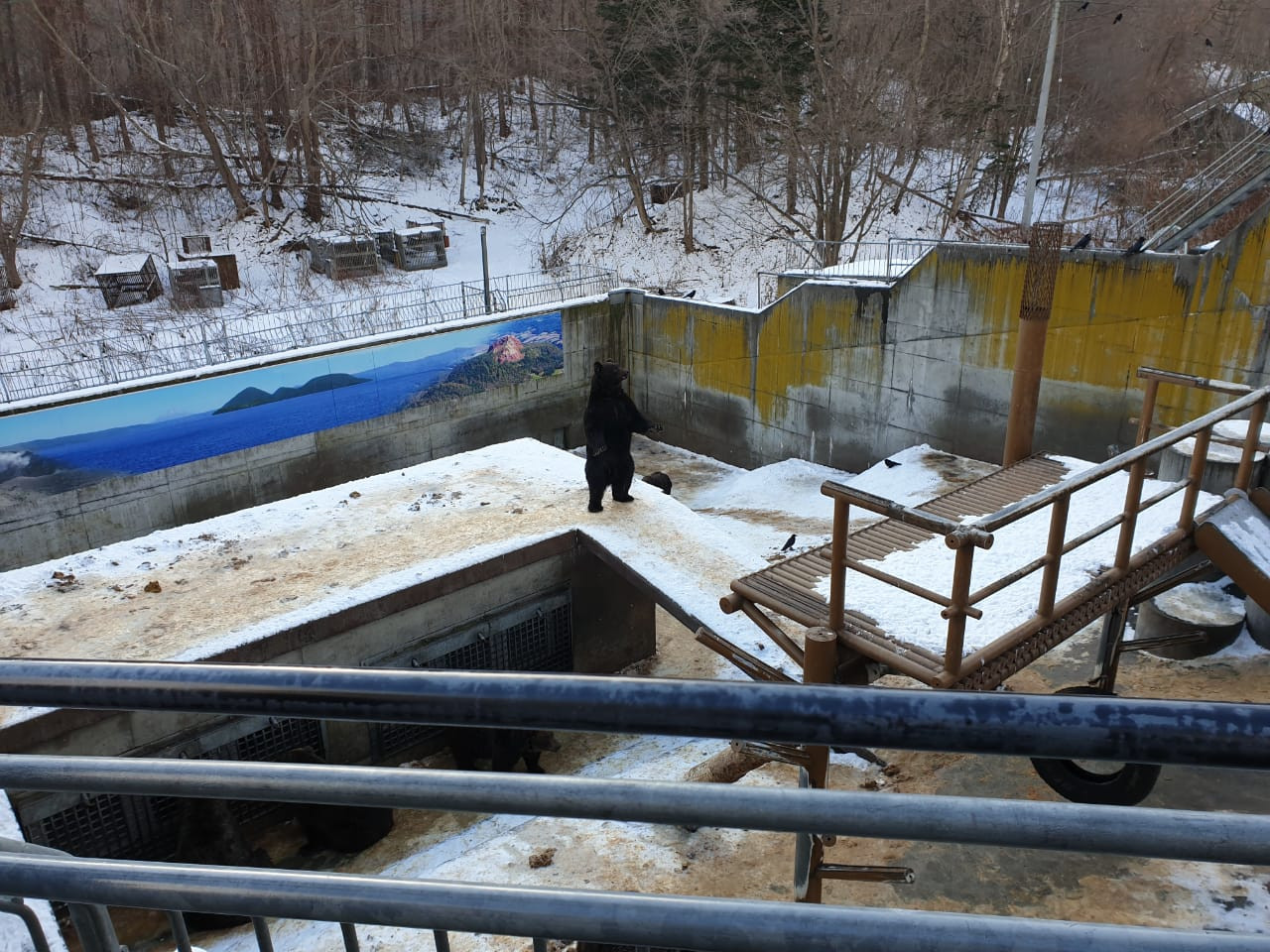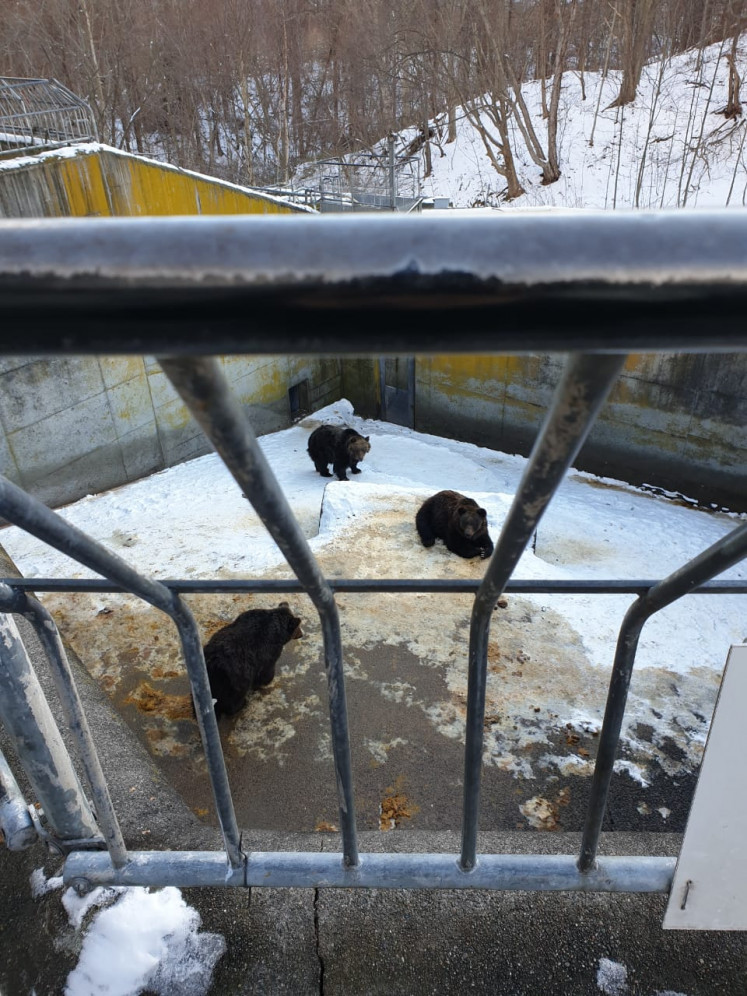Popular Reads
Top Results
Can't find what you're looking for?
View all search resultsPopular Reads
Top Results
Can't find what you're looking for?
View all search resultsWhy this Hokkaido bear park is animal abuse disguised as a conservation attraction
The bears are clearly stressed as they beg for food. It even raises the question as to why they are begging.
Change text size
Gift Premium Articles
to Anyone
H
okkaido in Japan is known as one of the best places to go to for winter vacations. Nobody can really resist the tempting idea of a snow-themed adventure during Christmas.
There are many attractions in Hokkaido that a tour company might try to advertise. From the Sapporo shopping centers to Lake Toya and even the local seafood (the gigantic crabs there are a specialty); there are just so many attractions to add to your must-see list.
Perhaps the most unique of these are Hokkaido bears, also known as grizzly bears in North America. In Japan, the local name for these bears is higuma. They are also known to be dangerous to hikers in Hokkaido, being over 2 meters tall and 300 kilograms in weight.
While they are harder to see in the wild, there are some places dedicated to breeding and researching these bears as they are now endangered. Some of them are even brought into zoos to educate the locals. After all, shouldn’t the symbol of Hokkaido be protected?
Showa Shinzan Bear Ranch is a zoo in the Usu district of Hokkaido. This zoo is one of the four different bear zoos that can be found on the island.
There are about 140 bears there, and tourists are allowed to buy apples and nuts to give the bears for them to eat. It’s said that the bears there have “smiling” faces and they know how to wave to visitors.
It turns out that the bears are kept in large, dismal-looking pits. A single pit was filled with eight to 10 bears, making it appear overcrowded. Bears are usually solitary creatures, so to see so many of them in one area felt terrible.
Bears in confinement at the Showa Shinzan Bear Ranch in the Usu district in Hokkaido, Japan. (Courtesy of Elysa Ng/File)The pits were covered with excrement and urine, covering the entire place with a foul smell that pierced the cold winter air. Most of the pits are empty of everything else, except a water pit, leaving the bears completely exposed to the harsh elements outside. Some of the pits had some wooden platforms for the bears, although they did nearly nothing to protect the bears from the shade.
The biggest red flag was the behavior of the bears, some sitting up on their haunches to wave at visitors and beg for food. The cages were open, meaning that visitors could throw in the food and nuts they bought upon entering. However, it’s obvious that not just apples and nuts are thrown in there. Visitors also throw rocks and hard objects at the bears whenever they feel like it — and the poor bears have nowhere to hide. There is also a lack of supervision around these bares, signaling a possible lack of care.
This zoo is the exact stereotype of how people perceive zoos. The bears are clearly stressed as they are begging for food. It even raises the question of why they are begging. Could it be that they are not eating enough and can only rely on what is given to them by visitors?
Some of the bears were also pacing around in circles, a clear sign that they were stressed. Several can also be seen standing on their hind legs and vocalizing pitifully into the cold winter air. None of these bears were exactly the “smiling, waving bears” that had been advertised. They were all miserable, and they were all being exploited under the premises of conservation.
The exploitation of animals is very common in small-scaled zoos that are not regulated. They aim to earn as much money as possible, bringing in people under the premise that they are going to learn something educational and conservational.
It is extremely sickening that the Showa Shinzan Bear Ranch has a better supervised and maintained gift shop compared to the actual enclosures outside — at least there were several workers manning the desk for money.
It is also sickening how much the tickets the add-on amount to “feed” these starving bears cost. This isn’t animal conservation; it’s a bear farm. It’s similar to that of puppy mills where the puppies are bred without any responsibility.
The conservation of animals is always for a species' well-being. It is unfortunate that human greed has gotten in the way. Visitors are led to believe that these animals' well-being is taken care of through some very carefully worded advertisements like “smiling, waving bears”, tricking people into believing that this is the norm.
Many visitors didn’t even recognize that the zoo’s treatment of the bears was tantamount to abuse. Many happily took selfish in front of the pits. Only four or five people complained about the general health and lack of well-being of these bears.
Jane Goodall said: “Change happens by listening and then starting a dialogue with the people who are doing something you don't believe is right.”
To be able to work together with nature, we must put our own benefits aside and always put the well-being of what we’re trying to save first. It is always better than trying to put on a mask. (kes)












